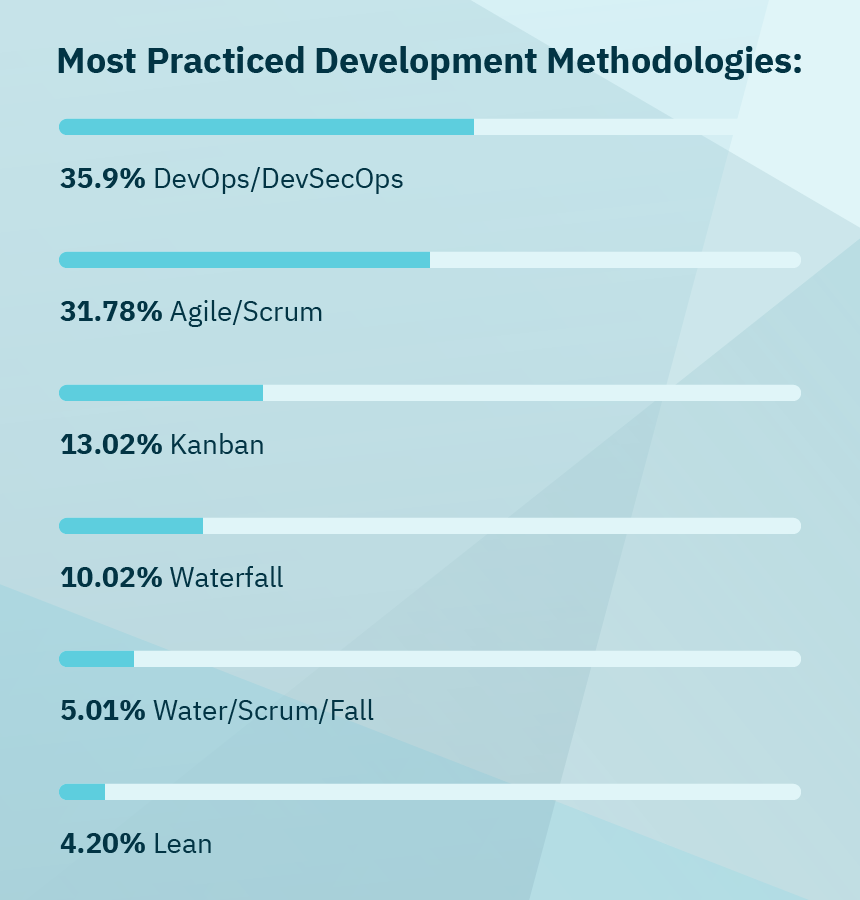Enterprises across the globe have embraced Agile and DevOps software development approaches to keep up with the business turbulence and competitive pressure. This is evident from the Gitlab DevSecOps 2021 Survey.

Although the development approach has changed a lot, software testing still continues to be one of the most manual-driven processes. This means that organizations are still using manual testing approaches in which testing is carried out as an end of development activity, rather than baked into the development process.
The conventional testing approach carries a high risk of errors, as any bugs detected in the later stages of development necessitate significant rework, redesign, and strategy revision. The result is a detrimental effect on time-to-market.
Learn more: Manual vs. Automated Testing
DevOps aids organizations in achieving faster software delivery. However, traditional and manual techniques for software testing can hinder the DevOps process, leading to cost overruns and missed deadlines. This is supported by the findings of the 2021 Gitlab DevSecOps Survey, which emphasize that manual testing is the most significant barrier to the success of DevOps practices.
The Big Question:
Why Are Organizations Hesitant In Adopting Test Automation?
Despite the agreement of business leaders on the benefits of test automation, they may be hesitant to adopt it due to concerns such as high costs, insufficient skill sets, and low confidence in risk coverage.
In this blog, we’ll spotlight how to infuse confidence among decision makers when it comes to test automation. We’ll also highlight how they should measure the value of test automation to understand the key benefits they will get as early adopters of test automation.
Test Automation Enables Devops
DevOps is a set of practices that combines software development and IT operations. Its aim is to shorten the software development life cycle and provide continuous delivery with high quality software. It means that dev teams will be rolling out more frequent updates. Manually keeping up with the speed of development can be extremely difficult.
Test automation solves this problem by enabling instant feedback loops, allowing developers to move code from development to build more quickly. Automated tests can be run more frequently and at higher speeds, enabling faster software delivery. Thus, continuous testing will make enterprises more agile and competitive.
Metric to consider: software development life cycle time
Learn more: Why Test Automation is Critical to DevOps
Automation Enables Organizations to Keep Pace with ERP Vendors
Most ERP vendors work on the principle of continuous innovation. Oracle rolls out updates on a quarterly basis, Salesforce three times a year, Microsoft Dynamics 365 twice a year, and SAP two to three times a year. With each of these updates, organizations typically have a short testing window to test their software. For instance, Oracle offers a two-week testing window to its customers.
Enterprises that rely on manual testing approaches often struggle to keep pace with the frequency and depth of software updates. The consequence of this is that they test too little, which exposes them to application downtime risk.
Test automation enables organizations to test all their processes in a shorter period of time. This means they’re able to keep pace with these frequent updates. Because organizations invest so much money in their ERPs, it’s logical to say that test automation enables companies to get the most out of their ERP investment.
Metric to consider: ERP updates adoption on time
Learn more: How to Justify Test Automation Spend to Your Boss
Automation Reduces Risk
To ensure the success of Agile and DevOps, it is essential to conduct regression tests frequently, be it on a weekly, daily, or nightly basis. Typically, test engineers rely on their experience to choose the appropriate smoke or regression test cases, often with a few guesses. However, this approach lacks scientific basis and can result in some bugs slipping into production.
And downtime risk is expensive—according to Gartner, one hour of application downtime can cost a business $300K an hour.
A robust test automation framework ensures your organization achieves proper test coverage by prioritizing testing on high-risk business processes.
Metric to consider: Test coverage achieved
Learn more: How Opkey helps in increasing the test coverage across custom apps
Automation Saves Organization’s Time
As enterprises have embraced Agile and DevOps to deploy new software releases, they need to execute regression tests more and more frequently. Test automation helps them to create a tighter feedback loop between the development of code and testing, which significantly reduces the time it takes to resolve bugs.
Time saved is a simple metric to justify investment in automation, because time is money. Test automation eliminates labor-intensive, time consuming, repetitive tasks that are needed for regression testing. And when organizations can spend less time testing, they can spend time on higher value tasks.
Metric to consider: man-hours of testing saved
Learn more: How to Measure the Business Value of Test Automation
Conclusion
IT leaders and business owners need to understand that test automation is a long term investment. There is a possibility that you may not always see the benefits of it instantly. The above mentioned metrics help you understand the real-value in test automation, such as the software development lifecycle time, percent of ERP updates completed on time, test coverage achieved, and man-hours of testing saved.


